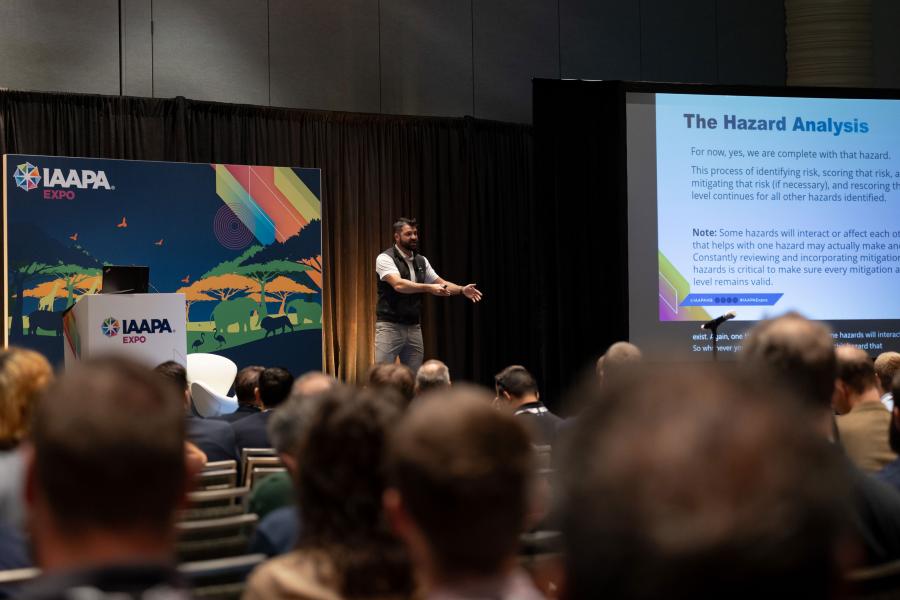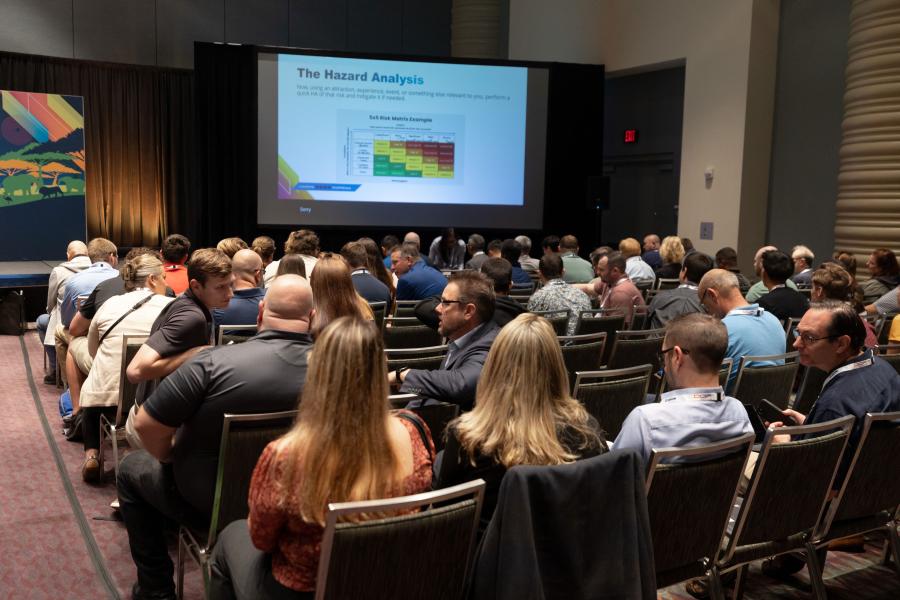13th November 2023 –
Enhancing safety begins with risk assessment
Whether you are designing a ride, operating an attraction, or planning a special event, there are always elements of risk that must be assessed in advance.
“Managing risk allows us, as business leaders, to make informed decisions,” says Cavu Designwerks President Mark Stepanian. “It also causes our team to really dig deep into the project, which can lead them to identify other problems or challenges.”
Speaking to a full house in an EDUSession on Monday of IAAPA Expo 2023 in Orlando, Stephanian presented a ‘two-matrix’ approach to risk assessment: a top-level Hazard Analysis to scrutinize an experience in its entirety and a bottom-up Failure Mode and Effects Analysis (FMEA) that probes every individual component.
Managing and quantifying risk limits a company’s financial and legal exposure, as well as any potential reputational damage. More importantly, by reducing uncertainty, attractions and manufacturers ensure a safe guest experience.
“Put yourself in the position of the guest and walk through an experience from beginning to end, imagining anything that could go wrong,” advises Stepanian, then assess the likelihood that a hazard could occur, as well as the potential consequences and causes.
Visualization tools, such as virtual reality, augmented reality software, and physical mockups play a key role in this process. Focus groups and roleplaying can help attractions identify potential blind spots as well.
For example, when designing a virtual reality experience for Lionsgate Entertainment World in which riders mount a real motorcycle attached to a simulator platform, Cavu’s team determined that a rider falling off the bike and injuring themselves may be a risk. To mitigate the likelihood of injury, the engineering team identified two choices: change the design of the ride to lower the likelihood of a fall or make the floor out of a softer material so that someone who falls is not injured.
A solution cannot be made in a vacuum. It needs to be reviewed by everyone involved in a project. The choice of a squishy floor, for example, was vetoed by the creative, operational, and maintenance teams. The creative team argued that a soft floor would ruin the ride’s authenticity and storyline, while the operations team noted that it increased the likelihood of tripping, adding a new hazard. The maintenance team also asserted that a soft floor would need to be replaced more frequently.
Cavu’s team went back to the drawing board and decided to add a back restraint and seat belt to prevent riders from falling. However, even this decision required analysis. What type of seat belt would work best?
To answer this question, a second approach, the FMEA matrix, examines every component and questions how it could fail. Values—based on likelihood, detection, and potential severity—are assigned to every risk.

“The FMEA is an extremely powerful tool, but it is still subjective,” Stepanian cautions. “There’s always a tradeoff. You can mitigate risks fully by not building an attraction at all. But we’re in the business of designing experiences.”
Tips for Quantifying Risk
- Challenge your assumptions the entire way through the process.
- Start early. Conduct a risk assessment during the design phase. Don’t wait until implementation.
- Have at least two teams, working in silos, conduct the analysis. When you compare notes, drill down to understand the cause of any differences.
- Remember that quantifying risk is subjective. When there is a difference of opinion, start with the worst-case scenario.
Article first appeared on Funworld.


